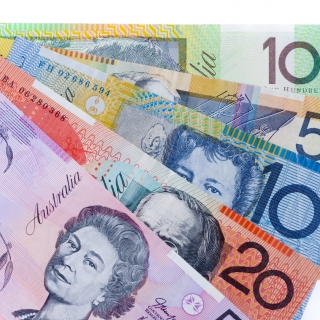


The Australian dollar weakened to around $0.656 on Monday, reversing gains from the previous week, as renewed tariff threats from US President Donald Trump stirred fears of potential global trade war. Trump announced a 30% tariff on imports from the European Union and Mexico starting August 1, while also signaling the possibility of further duties on other countries and urging trading partners to return to the negotiating table.
In a related move, Trump proposed a steep 200% tariff on Australian pharmaceuticals, sparking concern among Australian industry leaders and government officials, as it could cost the Australian economy up to A$2.8 billion if implemented.
Meanwhile, investors are turning their attention to upcoming reports on consumer confidence, consumer inflation expectations, and employment due later this week.
Source: Trading Economics
The Australian dollar held steady around $0.651 on Thursday, holding onto recent gains after the September trade surplus widened sharply to AUD 3.94 billion (vs. August's revised AUD 1.11 billion), be...
The Australian dollar weakened to around $0.647, hitting its lowest level in eleven weeks. This decline continued as risk-off sentiment in global markets intensified, overshadowing the Reserve Bank of...
AUD/USD firms as traders brace for Australia Q3 inflation data and Fed decision The Australian Dollar (AUD) edges higher against the US Dollar (USD) on Tuesday, extending its winning streak for the f...
The Australian dollar (AUD) rose to around $0.656 on Tuesday, its highest level in nearly three weeks. This increase was primarily due to the weakening US dollar (greenback). US market participants aw...
The Australian dollar strengthened against the US dollar on Wednesday, recouping the previous session's losses. This boost came from comments by RBA Assistant Governor Sarah Hunter: recent data appear...
Crude prices recovered from a midday dip on Friday on hopes Hungary can use Russian crude oil as U.S. President Donald Trump met Hungary's Prime Minister Viktor Orban at the White House. Brent crude futures settled at $63.63 a barrel, up 25 cents...
US stocks rebounded from early losses to close mostly higher on Friday amid hopes that Congress members were making progress toward ending the government shutdown. The S&P 500 and the Dow Jones closed 0.3% higher, while the tech-heavy Nasdaq...
European stocks fell on Friday as investors digested more quarterly earnings, but weekly losses were inevitable, with concerns regarding overheated valuations evident. The DAX index in Germany dropped 0.8% and the CAC 40 in France declined 0.2%,...
 The Institute for Supply Management (ISM) is scheduled to release its October Services Purchasing Managers' Index (PMI) on Wednesday. The report, a...
The Institute for Supply Management (ISM) is scheduled to release its October Services Purchasing Managers' Index (PMI) on Wednesday. The report, a...
 The ISM Services PMI rose to 52.4 in October 2025 from 50 in September, beating forecasts of 50.8, pointing to the strongest expansion in the...
The ISM Services PMI rose to 52.4 in October 2025 from 50 in September, beating forecasts of 50.8, pointing to the strongest expansion in the...
 European stocks opened lower on Wednesday (November 5th), reflecting a global downturn amid growing concerns over sky-high tech valuations.
The...
European stocks opened lower on Wednesday (November 5th), reflecting a global downturn amid growing concerns over sky-high tech valuations.
The...
 Asian markets opened higher, following Wall Street's rebound. The Nikkei and Kospi jumped around 1% at the open, while US stock futures fluctuated...
Asian markets opened higher, following Wall Street's rebound. The Nikkei and Kospi jumped around 1% at the open, while US stock futures fluctuated...